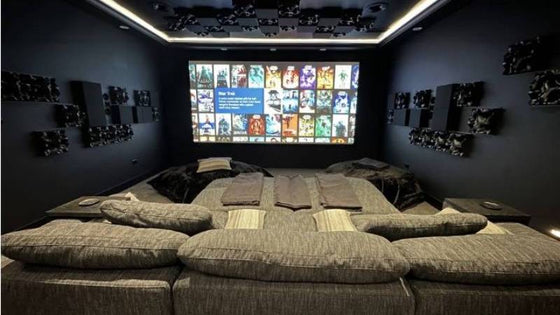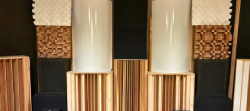Creating a system you love shouldn't be difficult. The Acoustic Frontiers blog is here to help.
Calling all 2 channel audiophiles! The mainstream audio press, in this case the venerable magazine The Absolute Sound, is starting to educate us about how to get good bass!
They've just published an article in the Spring 2010 High End Audio Buyers' Guide. It's written by Robert Harley, the same guy who wrote the The Complete Guide To High End Audio. The article is quite high level and covers a lot of material in its 6 pages. Some of the topics covered are: matching the speaker to the room; loudspeaker placement; addition of a subwoofer to your system; addition of acoustic absorbers; the physics of bass and DSP room correction.
A major cop out of the article is the section on loudspeaker positioning, where readers are referred to the AV Guide website to download Mr. Harley's article on "System Set Up Secrets". I would have preferred them to replace the full page ad of the $60k Magico M5 speaker on the opposite page with some simple guidance on speaker placement!
 Can your system articulate the notes and dynamics of this warp speed drummer?There's a good section on 'describing bass performance', in which Mr. Harley highlights lack of pitch definition as being a highly prevalent bass problem. Pitch definition is the ability to be able to clearly distinguish notes from each other. Because notes in the bass region are closely packed together room modes (having a modal bandwidth of 3hz) are a major issue. The kick drum has its main notes from 40-80hz. A room mode at 60hz will cause a number of problematic effects, including those related to two of our key sound quality metrics response (due to some notes being louder than others) and clarity (through masking of other notes). The longer decay of these room modes often leads to the complaint of 'muddy' bass, where something is going on but you can't quite relate it to the musical content.
Can your system articulate the notes and dynamics of this warp speed drummer?There's a good section on 'describing bass performance', in which Mr. Harley highlights lack of pitch definition as being a highly prevalent bass problem. Pitch definition is the ability to be able to clearly distinguish notes from each other. Because notes in the bass region are closely packed together room modes (having a modal bandwidth of 3hz) are a major issue. The kick drum has its main notes from 40-80hz. A room mode at 60hz will cause a number of problematic effects, including those related to two of our key sound quality metrics response (due to some notes being louder than others) and clarity (through masking of other notes). The longer decay of these room modes often leads to the complaint of 'muddy' bass, where something is going on but you can't quite relate it to the musical content.
At Acoustic Frontiers we can help calibrate DSP room correction (also known as EQ or equalization products). The idea with equalization is that it can be effectively used to deal with narrow band problems such as room modes. Equalization is especially applicable to audiophile situations where there is typically only one primary listening position. It is always best to minimize the amount of work the EQ needs to do by careful consideration of the modal response of the room and using this knowledge to locate both listener and loudspeakers. Experience has shown that automatic room EQ products like Audyssey are not as effective as hand dialled EQs. The downside of hand dialling an EQ is that it requires precision measurement tools and the knowledge to interpret them. The other major factor that sometimes concerns audiophiles is the extra link in the chain. If EQ is placed correctly - either in the line to the subwoofer only or in the digital chain between a music server or CD player and DAC then there should be no perceivable negative impact on any aspect of sound quality.
This media room was intentionally designed to feel like part of the home—not a separate, tech-heavy space. Through careful acoustic planning, equipment integration, and final calibration, we achieved a room that is both beautiful to live in and immersive to experience.
"No other subwoofer system I’ve owned even comes close to what this room delivers. Reaching out to Acoustic Frontiers was one of the best decisions I’ve made—I highly recommend working with them if you want to get the most out of your theater."

Nyal Mellor, Founder, Acoustic Frontiers



Nyal Mellor
Author